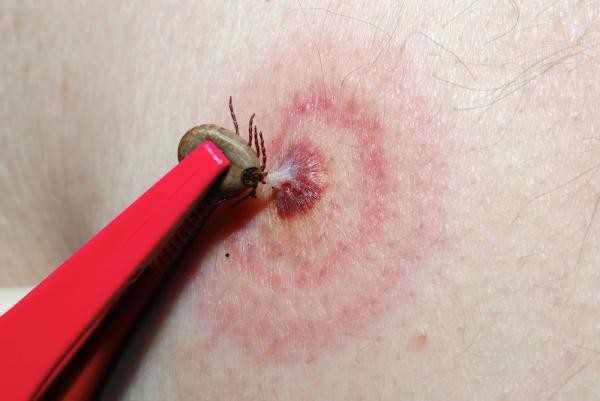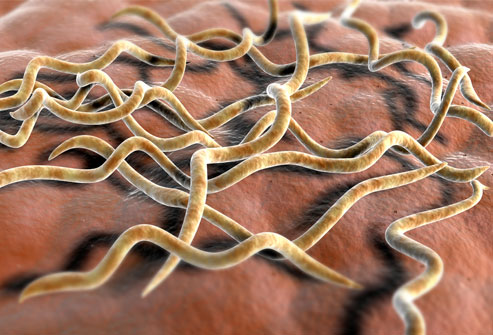Warwick Rhode Island Lyme Disease Doctor
Lyme Disease Diagnosis
Being diagnosed for lyme disease is hard to figure out if it’s really lyme or the other 300 diseases it mimics. You can get bit by a tick that can give you lyme disease just about anywhere in the US, even in Warwick.

Lyme disease is spread by deer ticks and is caused by a spirochete bacteria name Borrelia burgdorferi. When the bacteria reach the bloodstream and are spread throughout the body, it can cause signs and symptoms ranging from mild to severe.
Pathophysiology
Deer ticks are the vector insect of this kind of disease. B. burgdorferi lives in the saliva of the tick and when the tick bit a person, the bacteria is introduced inside the body. B. burgdorferi will then travel the bloodstream and infect different body parts such as the nervous, integumentary, and musculoskeletal system.
Its most noticeable symptom is the rash that it creates, which is an immune response of the body to the invading foreign bacteria. The rash is developed by the time the deer tick bit a person. The tick's saliva is a perfect nourishing substance for the bacteria. The tick's saliva itself contains chemical that can disrupt or damage the local immune system. When the skin's immune system is compromised, it can serve as a breeding ground for the bacteria. From the site of the bite, the spirochete bacteria will then asexually reproduce and will spread outwardly. This is the main reason that lyme disease rash is circular in appearance. In some unknown reason, the neutrophils, which are the body's antigen for invading bacteria, do not respond promptly to the site or failed to take action.
Early Stage
Circular rash has 5 to 6 inches diameter
"Bull's eye" rash
Occasionally itchy or painful
Signs of inflammation may or may not be present
Late Stage
Meningitis
Cerebral palsy
Shooting pain that leads to sleep disturbances
Paraplegia
Fatigue
Numbness
Paresthesia
Encephalomyelitis
Bladder problem
Lyme disease has many other complications that may even affect mental and emotional health. This is the main reason that early detection and prompt medical attention should be given. Lyme disease may not be serious at first, but the later stages of the disease may lead to debilitating effects.
Lyme Disease Symptoms
The first symptom is visual in some cases. A rash resembling a bullseye is a certain sign you have lyme disease. In two to four weeks, if not treated symptoms can become severe with lots of pain.

Once assumed to be a regional disease largely confined to the
northeastern United States and spread by bacteria carried only by deer
ticks, Lyme experts now report that cases of the illness have been
documented in every state. There is also evidence to suggest that it
can be spread through other means, including mosquitoes and body
fluids. According to JoAnne Whitaker, M.D., of Bowen Research
Laboratory in Florida, "Lyme disease isn't just a tick-borne
infection. I have found the bacteria in every single mosquito that I've
examined, from blood all over California and all over Florida. Dr.
Whitaker believes that "Lyme is the most prevalent disease
there is."
Dr. Tod Thoring is a naturopath and the owner of Pacific Natural
Medicine and Skin Care Centre in Arroyo Grande, California. In his
family practice, Thoring has observed a steady increase in the
frequency of patients with Lyme. Although the evidence suggests that
Lyme is on the rise throughout the country, many people have been told
by medical professionals that Lyme disease does not exist in California.
"The medical community is in its infancy in learning about
this disease," says Dr. Thoring.
Lyme is considered a difficult disease to diagnose and treat. Lyme
symptoms mimic hundreds of other diseases, and has prompted the medical
community's nickname for the disease: the new Great Imitator. The Lyme
bug is a spirochete, the same type of spiral-shaped bacterium that is
responsible for syphilis. Capable of moving through body tissue as well
as the bloodstream, the spirochete can evade the body's immune system,
change from a spiral into a ball and pull a protective shell, a fibrin,
over itself.
The standard antibiotic treatment is not as successful as
antimicrobials, according to Dr. Cowden's studies. "Unless
you start treating the infection during the first three to six
weeks," he says, "patients tend to have to get
repeated rounds of antibiotics longterm, for years and years and
years." Cowden devotes much of his time educating other
medical doctors about the use of antimicrobial herbs to help patients
heal from Lyme disease, and as a result of intensive medical studies,
has developed a protocol with a high success rate.
"We want to try and get as many doctors as possible familiar
with these protocols," says Dr. Cowden. "They're
working well, they're non-toxic, they're not giving the adverse
reactions like a lot of people see, with the fungal overgrowth from
standard antibiotics. And the patients are getting well and staying
well even though the basic protocol is stopped at some point."
The studies and doctors quoted in the article are all included in the Lyme Disease Research Database Conversations
with Lyme Experts Interview Series.
Lyme Disease Stages
If not taken serious, symptoms then can turn to neurological causing memory loss and motor movement disability. And in some serious cases, death.

Once assumed to be a regional disease largely confined to the
northeastern United States and spread by bacteria carried only by deer
ticks, Lyme experts now report that cases of the illness have been
documented in every state. There is also evidence to suggest that it
can be spread through other means, including mosquitoes and body
fluids. According to JoAnne Whitaker, M.D., of Bowen Research
Laboratory in Florida, "Lyme disease isn't just a tick-borne
infection. I have found the bacteria in every single mosquito that I've
examined, from blood all over California and all over Florida. Dr.
Whitaker believes that "Lyme is the most prevalent disease
there is."
Dr. Tod Thoring is a naturopath and the owner of Pacific Natural
Medicine and Skin Care Centre in Arroyo Grande, California. In his
family practice, Thoring has observed a steady increase in the
frequency of patients with Lyme. Although the evidence suggests that
Lyme is on the rise throughout the country, many people have been told
by medical professionals that Lyme disease does not exist in California.
"The medical community is in its infancy in learning about
this disease," says Dr. Thoring.
Lyme is considered a difficult disease to diagnose and treat. Lyme
symptoms mimic hundreds of other diseases, and has prompted the medical
community's nickname for the disease: the new Great Imitator. The Lyme
bug is a spirochete, the same type of spiral-shaped bacterium that is
responsible for syphilis. Capable of moving through body tissue as well
as the bloodstream, the spirochete can evade the body's immune system,
change from a spiral into a ball and pull a protective shell, a fibrin,
over itself.
The standard antibiotic treatment is not as successful as
antimicrobials, according to Dr. Cowden's studies. "Unless
you start treating the infection during the first three to six
weeks," he says, "patients tend to have to get
repeated rounds of antibiotics longterm, for years and years and
years." Cowden devotes much of his time educating other
medical doctors about the use of antimicrobial herbs to help patients
heal from Lyme disease, and as a result of intensive medical studies,
has developed a protocol with a high success rate.
"We want to try and get as many doctors as possible familiar
with these protocols," says Dr. Cowden. "They're
working well, they're non-toxic, they're not giving the adverse
reactions like a lot of people see, with the fungal overgrowth from
standard antibiotics. And the patients are getting well and staying
well even though the basic protocol is stopped at some point."
The studies and doctors quoted in the article are all included in the Lyme Disease Research Database Conversations
with Lyme Experts Interview Series.
Test for Lyme Disease
Please take the time to read this 15 minute blog. It tells of how someone beat Lyme Disease and Q-fever, both contracted from the same tick bite, but Q-fever being 10 time worse than Lyme Disease. He tells of how doctors were not able to cure him and at his last hope found several natural foods that turned his health around within a week. On deaths door to a full recovery. Check out the simple ways he cured lyme disease with organic foods.

Are you suffering from Lyme disease?
If you have ever wondered what Lyme disease is and how you can treat it then listen closely. Bee pollen and Lyme disease do go together although they don't come together, because people are using pollen to help them overcome their symptoms and live a somewhat normal life.
Lyme disease can be deadly when not treated effectively and those who have long term bouts have experienced better results when using pollen to treat it.
What is Lyme Disease?
To better understand why pollen is effective in treating people with this disease, it's important to understand where this disease comes from and what it does to the human body.
Lyme disease is transferred via a tick bite, and the disease is a bacterial infection. Lyme disease can affect the joints, your skin, and will begin to penetrate the vital organs. There are phases to this disease, and often doctors have a tough time diagnosing it in the beginning as the symptoms mimic other conditions and diseases.
Some claim that through the use of bee stings that they are able to overcome the negative effects of this disease to the point where they feel as though they have been healed completely.
No one can claim to have the magic cure for this disease or any other disease for that matter; however there are plenty of patients that have experienced the healing power of pollen as well as the bee venom for their bout with this disease.
What a patient claims cannot be contested, and it just proves that there are different strokes for different folks.
Now that you know more about pollen and how powerful it is, what is your plan to treat your ailments today?
Cure for Lyme Disease

The dramatic increase in the number of cases of Lyme disease has caused a lot of panic in the medical community. Traditionally, it is treated with round after round of antibiotics. Some people never fully recover and the disease can be fatal.
Humans get Lyme disease most commonly from tics, but also from mosquitoes, fleas and mites. People suffering from it may initially experience fever, headache, and depression, developing a bull's eye-shaped rash. If a physician identifies this rash as Lyme disease, then treatment is immediately administered. The sooner antibiotics are given, the better your chances.
But, the treatment with antibiotics is very controversial. Rounds of antibiotics often need to be repeated, sometimes multiple times, and the symptoms could never go away or get worse. Some people have suffered endless damaging side effects of prolonged antibiotic treatments and still have long-term debilitating symptoms thought to be caused by Lyme disease. Long-term symptoms include arthritis, joint pain, heart problems and autoimmunity.
In any case, it is now believed that more than just antibiotics are needed to effectively treat it. Different antibiotics are needed to treat the bacteria in its different stages of development. Your body is left to deal with a build-up of toxins and free radicals that can only be cleared by powerful antioxidants, such as vitamin C. Additionally, the low acetylcholine levels need to be treated to help avoid the direr, long term effects of Lyme disease.
Talk with your doctor about treatment with vitamins and supplements. When you buy vitamins, make sure that your doctor and pharmacist know all medications that you are taking to avoid interactions.
What Is Chronic Lyme Disease?

The bacterium that breeds in the body of ticks causes Lyme disease. This was how I got this disease. However, there is an increase in discussion amongst scientists, as to whether Lyme disease is genetic or not. Recently, they have found a genetic factor that increases the chances of people suffering from chronic arthritis. This can change the disease from an almost unnoticeable ailment to an affliction that may last for many years.
This form of arthritis develops in only, one in ten people amongst whom the disease is untreated. All of them have an inherited factor, a component on the surface of the white blood cells. This chronic arthritis usually contains the same antibiotics that cure arthritis in its initial stage. Often, these drugs are ineffective in their chronic phases.
Recently, scientists and researchers have reported these findings at Stockholm on the Fourth International Meeting on Lyme disease. Researchers are carrying out more studies on the nature of the disease. Until that period, it is important for people who suffer from Lyme disease to have early treatment and undertake preventive measures.
In short, prevention and early detection is the best way to treat this disease.
Lyme disease is spread by deer ticks and is caused by a spirochete bacteria name Borrelia burgdorferi. When the bacteria reach the bloodstream and are spread throughout the body, it can cause signs and symptoms ranging from mild to severe.
Pathophysiology
Deer ticks are the vector insect of this kind of disease. B. burgdorferi lives in the saliva of the tick and when the tick bit a person, the bacteria is introduced inside the body. B. burgdorferi will then travel the bloodstream and infect different body parts such as the nervous, integumentary, and musculoskeletal system.
Its most noticeable symptom is the rash that it creates, which is an immune response of the body to the invading foreign bacteria. The rash is developed by the time the deer tick bit a person. The tick's saliva is a perfect nourishing substance for the bacteria. The tick's saliva itself contains chemical that can disrupt or damage the local immune system. When the skin's immune system is compromised, it can serve as a breeding ground for the bacteria. From the site of the bite, the spirochete bacteria will then asexually reproduce and will spread outwardly. This is the main reason that lyme disease rash is circular in appearance. In some unknown reason, the neutrophils, which are the body's antigen for invading bacteria, do not respond promptly to the site or failed to take action.
Early Stage
Circular rash has 5 to 6 inches diameter
"Bull's eye" rash
Occasionally itchy or painful
Signs of inflammation may or may not be present
Late Stage
Meningitis
Cerebral palsy
Shooting pain that leads to sleep disturbances
Paraplegia
Fatigue
Numbness
Paresthesia
Encephalomyelitis
Bladder problem
Lyme disease has many other complications that may even affect mental and emotional health. This is the main reason that early detection and prompt medical attention should be given. Lyme disease may not be serious at first, but the later stages of the disease may lead to debilitating effects.
Warwick Rhode Island
https://lymedisease.pro/rhode-island-lyme-disease-specialist/
https://lymedisease.pro
